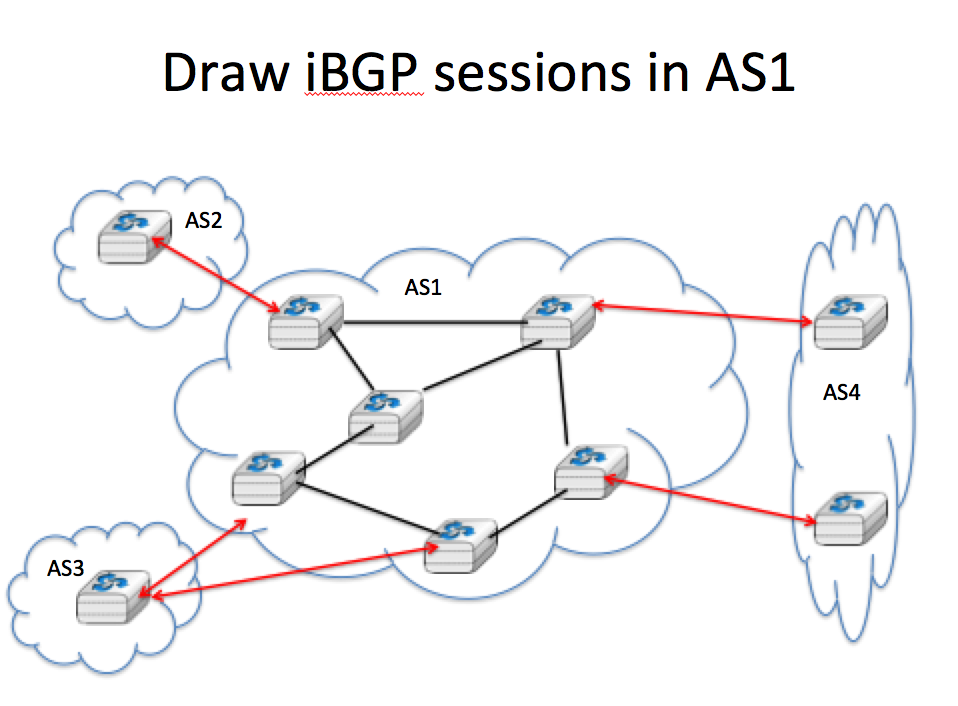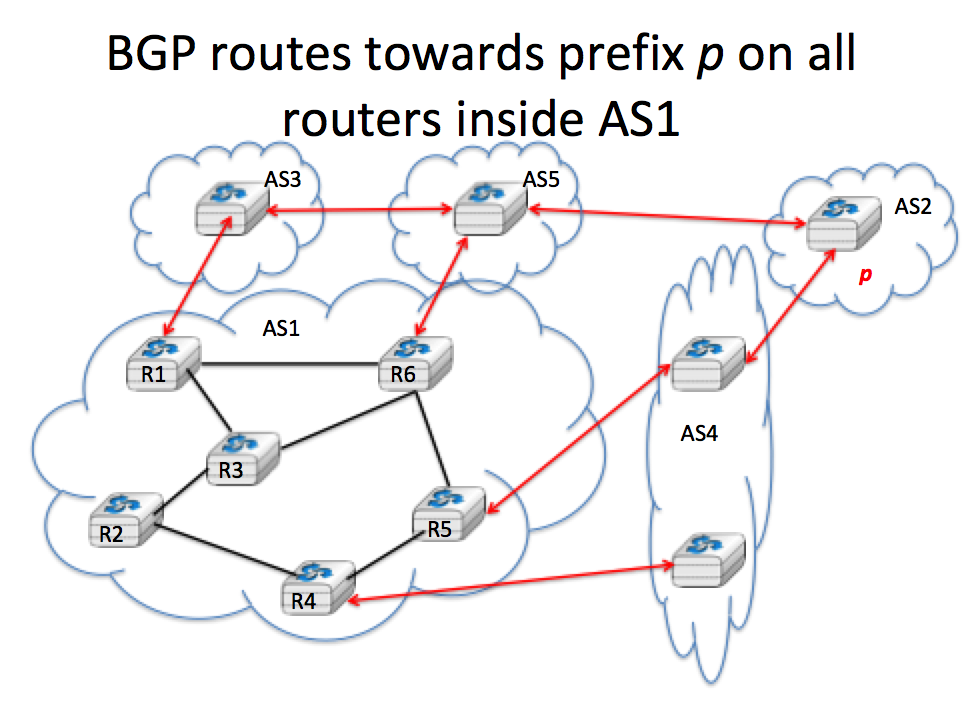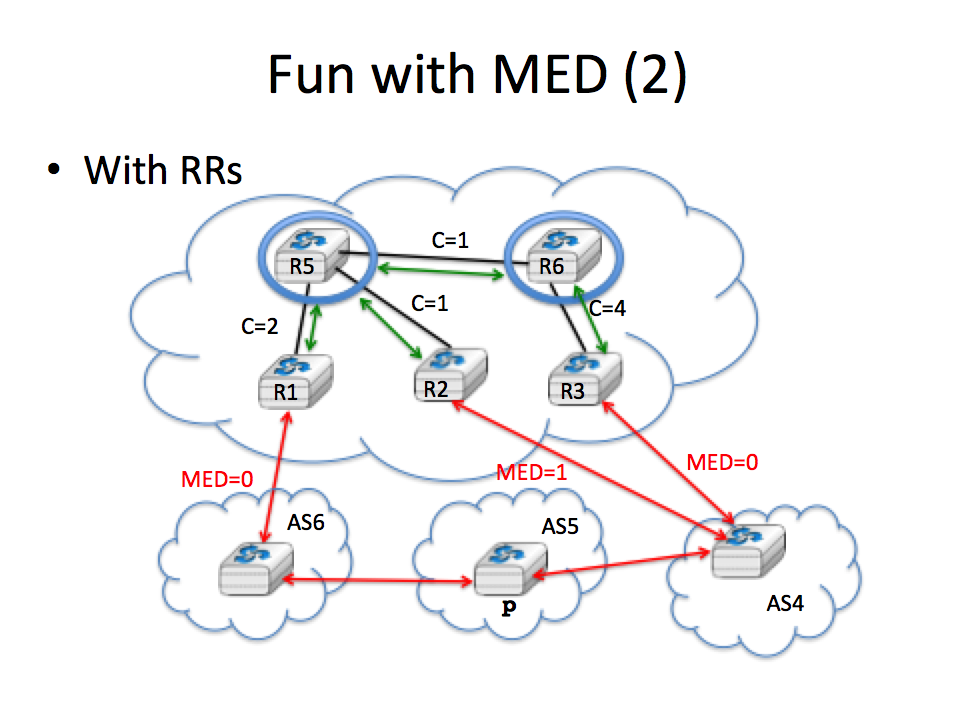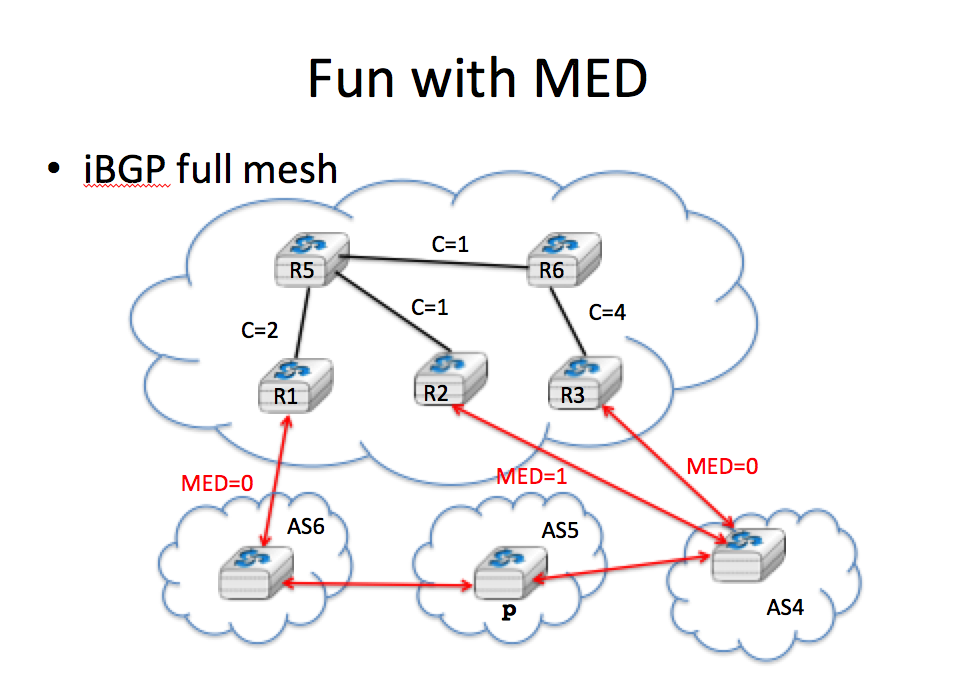A flipped classroom model allows students to better understand BGP
The Border Gateway Protocol (BGP) is an important protocol in today’s
Internet. As such, it is part of the standard networking textbooks. At
UCLouvain, timing constraints force me to
explain BGP in two different courses. The students learn the basics
of external BGP within the introductory networking course that is
mandatory for all CS students. We mainly cover routing policies
(customer provider and shared-cost peerings) and the basics of eBGP
with the utilisation of the AS-Path and the local-pref
attribute. Some students register for the advanced networking
course that covers BGP in more details, MPLS, VPNs, multicast and
other advanced topics.
Within the introductory course we explore the utilisation of interactive web-based exercises that I have described in other posts. Within the advanced networking course, the smaller group (less than 40 students) allows me to explore new teaching methods such as the flipped classroom. There are many models of flipped classrooms. Some rely on videos, other asks students to read articles before coming to the lectures, … For the BGP part of the advanced networking class, I have successfully applied a teaching model that leverages tha availability of large blackboards in the class. Each course is a mix of short presentations with a few slides and group discussions on the blackboard. For each topic, I usually briefly introduce it and then ask the students to consider a simple network and compute the BGP routing tables and discuss among themselves within each group before summarising their result to the entire class. With small groups (4-5 students) this creates a lot of interactions and the students are forced to discuss whether a given BGP route will be selected or not.

One of the first exercises is to draw the full mesh of iBGP sessions. Although the full-mesh is a basic concept of graph theory, students often have difficulties to map it to an IP network.

The discussion continues with more complex networks as we explore the different steps of the BGP Decision process.

the result of some discussions

Every 5-10 minutes the students discuss on different networks. All the examples are provides in the attached [slideset]](/images/BGP-slides.pptx) that are also available on slideshare.
The course ends with some of the MED oscillation problems described in Timothy Griffin and Gordon T. Wilfong. 2002. Analysis of the MED Oscillation Problem in BGP. In Proceedings of the 10th IEEE International Conference on Network Protocols (ICNP ‘02). IEEE Computer Society, Washington, DC, USA, 90-99.. Surprisingly, the students can solve the classical problem shown below

provided that they first solve the simplest network that does not contain route reflectors.

This teaching method works well even if it takes 6 hours to cover these BGP concepts. Feel free to contact me if you plan to use it in your courses.
